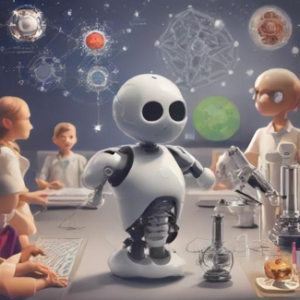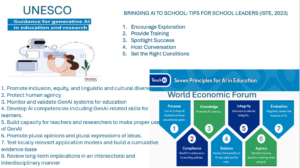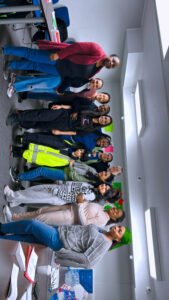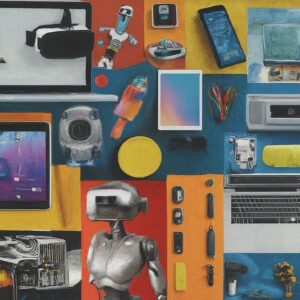
Image generated by AI
As an educator, I am required to plan my lessons before going to the classroom. Lesson planning requires the use of various instructional resources that can help guide the selection of appropriate content, tasks, teaching strategies, and feedback mechanisms that teachers can use to enhance learners’ understanding. These instructional resources can include the use of print and non-print materials as well as technology resources. As an experienced classroom teacher and a science education lecturer, I have had the opportunity to use various hardware, like projectors and laptops, and software, like the Unity app, simulations, and ed apps, in my class. These hardware and software resources encompass a subset of what is called ‘educational technology.”
Reflecting back to how technology was used in my primary and secondary school days, educational technology was more about the use of audio aids (recordings), visual aids (VHS videos) and audiovisual aids (television programs), particularly during special events at schools or in the home. Unfortunately, these technologies did not promote active learning because they were more centred on the presenters (teachers) and the material itself. However, the emergence of modern technologies has provided more opportunity for enhancing the learning and communication process, thereby promoting students active engagement and encouraging personalized learning. In line with the arguments of Bates in his book titled “Teaching in a Digital Age,” educational technology has also been viewed from the perspective of oral communications and written communications.
According to Kozma (1994), technology can be understood as a tool characterized by specific attributes that determine its functionality, and its ability to represent information and assist learners in creating and manipulating mental models. In other words, one can consider educational technology as tools, technologies, and resources that can enhance learning experiences. This includes hardware like computers and software like simulations and LMS, as well as emerging technologies like AR and VR (Huang et al., 2019). It’s grounded in educational theories on behavior, cognition, processes, and knowledge construction that are applied in technology development (Ouyang & Stanley, 2014).
References
- Huang, R., Spector, J. M., & Yang, J. (2019). Educational Technology: A Primer for the 21st. Springer: USA, https://doi.org/10.1007/978-981-13-6643-7_1
- Ouyang, J. R., & Stanley, N. (2014). Theories and research in educational technology and distance learning instruction through Blackboard. Universal Journal of Educational Research, 2(2), 161-172. https://eric.ed.gov/?id=EJ1053980


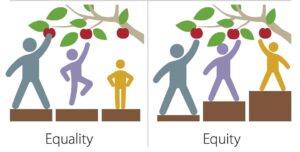
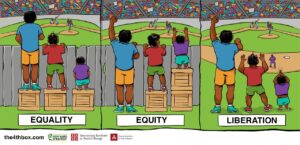
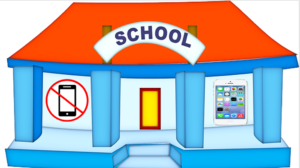 Today’s class explored the discussion on whether cell phones should be banned in the classroom or not. As speakers from the agree and disagree side narrowed down their points, my head kept buzzing with the reality of what is happening in the classroom. Listening to the supporting speakers and the resources shared, I can truly relate to the fact that the use of cell phones causes unnecessary distraction during instructional time, and impacts learning and concentration in the classroom, thus causing detrimental effects on students’ academic performance, and students can use them inappropriately.
Today’s class explored the discussion on whether cell phones should be banned in the classroom or not. As speakers from the agree and disagree side narrowed down their points, my head kept buzzing with the reality of what is happening in the classroom. Listening to the supporting speakers and the resources shared, I can truly relate to the fact that the use of cell phones causes unnecessary distraction during instructional time, and impacts learning and concentration in the classroom, thus causing detrimental effects on students’ academic performance, and students can use them inappropriately.  Well, even if there are strong reasons why cell phones should be banned or restricted in the classroom, the disagreeing side outlined key benefits of using cell phones: enhance student collaboration, communication, and content creation skills, enhance safety measures, and support teachers in their responsibilities to protect students, especially during emergencies (Sledge, 2018), access to educational apps, digital platforms, and supplemental lessons that can be used to support learning outside the school/classroom. The study by Gikas and Grant (2013) reported on both the benefits and challenges of using cell phones and other computing devices among university students. However, it seems the challenges identified in this paper were more pronounced by students who had the option of attending face-to-face lessons than for those who had work obligations or other important situations to attend. Reflecting on both sides of the argument, I think the use of cell phones is very important despite the challenges that come with using them, just like every other technology. However, total banning from school is NO..NO…NO because these students are already using cell phones and it has become a significant part of there lives, but probably making them put the phone away during school sessions and making them see reason for doing this might be helpful. More importantly, I feel parents should also be involved in taking responsibilities of how their children use phones. For instance, parents and students could be made to sign a memorandum of understanding on phone usage in school at the beginning of the year, a copy should be given to them; and they must always be reminded about their commitment to the signed document. Regardless of the policies on banning phones, I think educating students about the appropriate use of cell phones and how it can affect their lives even in the workplace or community goes a long way.
Well, even if there are strong reasons why cell phones should be banned or restricted in the classroom, the disagreeing side outlined key benefits of using cell phones: enhance student collaboration, communication, and content creation skills, enhance safety measures, and support teachers in their responsibilities to protect students, especially during emergencies (Sledge, 2018), access to educational apps, digital platforms, and supplemental lessons that can be used to support learning outside the school/classroom. The study by Gikas and Grant (2013) reported on both the benefits and challenges of using cell phones and other computing devices among university students. However, it seems the challenges identified in this paper were more pronounced by students who had the option of attending face-to-face lessons than for those who had work obligations or other important situations to attend. Reflecting on both sides of the argument, I think the use of cell phones is very important despite the challenges that come with using them, just like every other technology. However, total banning from school is NO..NO…NO because these students are already using cell phones and it has become a significant part of there lives, but probably making them put the phone away during school sessions and making them see reason for doing this might be helpful. More importantly, I feel parents should also be involved in taking responsibilities of how their children use phones. For instance, parents and students could be made to sign a memorandum of understanding on phone usage in school at the beginning of the year, a copy should be given to them; and they must always be reminded about their commitment to the signed document. Regardless of the policies on banning phones, I think educating students about the appropriate use of cell phones and how it can affect their lives even in the workplace or community goes a long way.